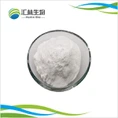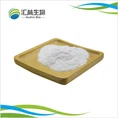As a provider of botanical ingredients to the wellness industry, we observe evolving consumer needs. One area gaining attention is supporting skin health during significant body composition changes, sometimes associated with weight management approaches. While specific mechanisms like GLP-1 are pharmacological, the resulting focus on skin integrity presents an opportunity for naturally derived ingredients. Let's explore how select plant extracts may contribute to maintaining skin appearance during such transitions.

Understanding Skin Changes During Body Composition Shifts
Significant weight loss, regardless of the method, can sometimes lead to changes in skin elasticity and firmness.¹ The skin is a dynamic organ, and its ability to adapt depends on factors like age, genetics, the rate of weight change, and overall skin health.² Supporting the skin's natural structure and hydration during periods of change is a common focus.

Botanical Allies for Skin Structure and Hydration
Several plant-derived extracts are researched for their potential roles in supporting skin health, particularly concerning elasticity and moisture retention. Here are three with notable scientific interest:
1. Centella Asiatica (Gotu Kola) Extract:

- Potential Role: Traditionally valued in Ayurvedic and Chinese medicine, Centella Asiatica contains active triterpenoids (asiaticoside, madecassoside). Research suggests these compounds may support the skin's natural production of collagen and elastin, key proteins for structure and firmness.³⁴
- Mechanism Insight: Studies indicate it may influence fibroblast activity and antioxidant pathways within the skin.⁵
- B2B Application: Used in serums, creams, and masks targeting skin resilience and appearance. Look for standardized extracts (e.g., titrated to triterpenoid content).
2. Hydrolyzed Collagen Peptides:
- Potential Role: Collagen is the primary structural protein in the skin's dermis. Supplementing with hydrolyzed collagen peptides (small, bioavailable fragments) has been studied for its potential to provide the building blocks the body uses to support its own collagen synthesis.⁶
- Mechanism Insight: Oral ingestion of specific collagen peptides may stimulate fibroblasts and increase the density of collagen fibrils in the skin, as observed in some clinical trials.⁷
- B2B Application: Widely used in ingestible supplements (powders, capsules) and topical formulations. Bioavailability and peptide size distribution (e.g., low molecular weight) are key quality indicators.


- Potential Role: HA is a powerful humectant naturally present in the skin, capable of holding significant amounts of water. Topical application of HA is well-established for hydrating the skin's surface layers.⁸ Oral supplementation is also being explored for its potential to support skin hydration and plumpness from within.⁹
- Mechanism Insight: HA contributes to the extracellular matrix and tissue hydration. Both topical and oral forms aim to replenish or support the skin's natural HA content.¹⁰
- B2B Application: Versatile ingredient for serums, moisturizers (topical), and nutraceutical capsules/drinks (oral). Molecular weight (high vs. low) influences its penetration and function.
A Holistic Approach: Synergy is Key
Supporting skin appearance during body composition changes likely benefits from a multi-faceted strategy:
- Hydration: Both internal (water intake) and external (humectants like HA, glycerin).
- Nutrition: Providing building blocks (e.g., amino acids from collagen, vitamins C & E for antioxidant support¹¹).
- Skin Structure Support: Ingredients potentially aiding collagen/elastin maintenance (e.g., Centella Asiatica).
- Gentle Care: Using mild cleansers and consistent moisturization.
For Formulators: Partnering on Skin Wellness Solutions
We offer high-purity, traceable extracts to support innovative product development:
Standardized Centella Asiatica Extract: Sourced for optimal triterpenoid profile.
Hydrolyzed Collagen Peptides: Available in various types (Type I & III, marine, bovine) with documented bioavailability.
Hyaluronic Acid: Topical and oral grades, different molecular weights.
Quality Assurance: All ingredients are backed by Certificates of Analysis (COA) ensuring purity, potency, and safety. We focus on sustainable sourcing and production methods.
Conclusion: Focusing on Natural Support Mechanisms
Significant body composition changes can present challenges for skin elasticity. While specific pharmaceutical pathways like GLP-1 operate outside the scope of botanicals, the resulting focus on skin health is clear. Plant extracts like Centella Asiatica, Hydrolyzed Collagen Peptides, and Hyaluronic Acid offer scientifically grounded approaches for formulators aiming to create products that support the skin's natural structure, hydration, and overall appearance during such periods. By combining these potent ingredients with holistic skin care practices, brands can address this evolving consumer wellness need effectively.
References
¹ American Academy of Dermatology Association (AAD). (n.d.). Weight Loss and Loose Skin. https://www.aad.org/public/everyday-care/skin-care-secrets/weight-loss-loose-skin (Accessed July 10, 2025).
² National Institutes of Health (NIH), MedlinePlus. (2023). Aging changes in skin. https://medlineplus.gov/ency/article/004014.htm (Accessed July 10, 2025). (General principles of skin elasticity changes).
³ Bylka, W., et al. (2013). "Centella asiatica in cosmetology." Postępy Dermatologii i Alergologii, 30(1), 46–49. https://www.ncbi.nlm.nih.gov/pmc/articles/PMC3834700/ (Accessed July 10, 2025).
⁴ Gohil, K. J., et al. (2010). "Pharmacological Review on Centella asiatica: A Potential Herbal Cure-all." Indian Journal of Pharmaceutical Sciences, 72(5), 546–556. https://www.ncbi.nlm.nih.gov/pmc/articles/PMC3116297/ (Accessed July 10, 2025).
⁵ Lee, J., et al. (2006). "Efficacy of Centella asiatica on human skin fibroblast proliferation and collagen synthesis in vitro." Journal of Medicinal Food, 9(2), 305-310. https://www.liebertpub.com/doi/10.1089/jmf.2006.9.305 (Accessed July 10, 2025).
⁶ Choi, F. D., et al. (2019). "Oral Collagen Supplementation: A Systematic Review of Dermatological Applications." Journal of Drugs in Dermatology, 18(1), 9–16. https://jddonline.com/articles/dermatology/S1545961619P0009X (Accessed July 10, 2025).
⁷ Proksch, E., et al. (2014). "Oral supplementation of specific collagen peptides has beneficial effects on human skin physiology: a double-blind, placebo-controlled study." Skin Pharmacology and Physiology, 27(1), 47-55. https://karger.com/spp/article/27/1/47/228720 (Accessed July 10, 2025).
⁸ Papakonstantinou, E., et al. (2012). "Hyaluronic acid: A key molecule in skin aging." Dermato-Endocrinology, 4(3), 253–258. https://www.tandfonline.com/doi/full/10.4161/derm.21923 (Accessed July 10, 2025). (Focuses on HA's role in skin).
⁹ Oe, M., et al. (2017). "Oral hyaluronan relieves wrinkles and improves dry skin: a 12-week double-blinded, placebo-controlled study." Journal of Cosmetic Dermatology, 16(4), 520-526. https://onlinelibrary.wiley.com/doi/10.1111/jocd.12335 (Accessed July 10, 2025).
¹⁰ Essendoubi, M., et al. (2015). "Human skin penetration of hyaluronic acid of different molecular weights as probed by Raman spectroscopy." Skin Research and Technology, 22(1), 55–62. https://onlinelibrary.wiley.com/doi/abs/10.1111/srt.12228 (Accessed July 10, 2025).
¹¹ Pullar, J. M., et al. (2017). "The Roles of Vitamin C in Skin Health." Nutrients, 9(8), 866. https://www.ncbi.nlm.nih.gov/pmc/articles/PMC5579659/ (Accessed July 10, 2025). (Highlights Vitamin C's role in collagen synthesis and antioxidant defense).





